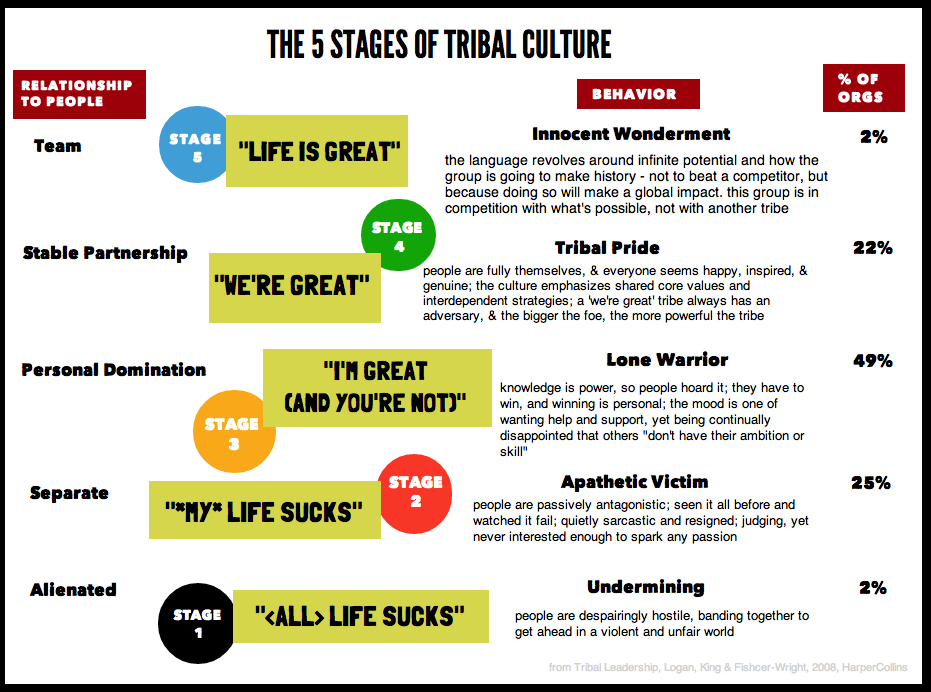My quick understanding is that moving team members to a place where they invest in each other instead of looking out for themselves improves the culture of the whole tribe.
Below are some useful resources.
Quick Overview
http://emergentbydesign.com/2012/06/28/a-step-by-step-guide-to-tribal-leadership-part-1-the-five-stages-of-tribal-culture/
http://wiki.dsoglobal.org/t/library/tribal_leadership/summary
Cheat Sheet on how to "level up"
http://finding-marbles.com/2012/02/29/tribal-leadership-the-1-page-cheat-sheet/
TED Talk from 2009 (16min)
http://www.ted.com/talks/david_logan_on_tribal_leadership
- Stage 3 is common among really smart people
- Hardest thing is moving from Stage 3 to Stage 4
- Stage 4 Example: Zappos
- Stage 5 Example: South Africa Reconciliation Council (Desmond Tutu)
- Distribution of Employed Tribes:
- Stage 1: 2%
- Stage 2: 25%
- Stage 3: 48%
- Stage 4: 22%
- Stage 5: 2%
- You need to talk all 5 tribe stages because people are at all 5 stages
- Tribes can only hear one level above or below where they are - leaders need to nudge them up
- Stage 3 to 4: Find someone you don't know and someone else you don't know and connect them - connect them to something greater than themselves
